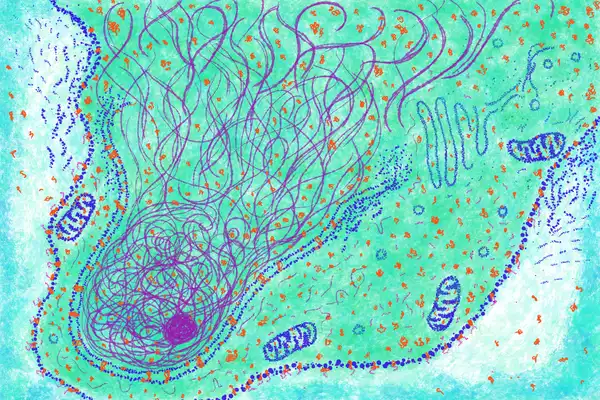
Everything you need to know about stem cells
What are stem cells, and what makes them so unique? What are the different types of stem cells, and how have they impacted modern medical science? Here is us answering all your questions about stem cells.

Imagine you pulled out a single cell from your body and burst it open. What do you think would spill out of it?
A human cell is a crammed up, jungle of biomolecules, the variety of which, is just enormous. So, to cut the really long story short, let’s take a look at the 4 main macromolecules that would come spilling out, if you popped open a cell.
Lipids (In blue): This is the material that lines the cell and the internal organelles of the cell, like the nucleus, Endoplasmic Reticulum, mitochondria and so on. So, what is a lipid? Lipids are fatty acid-based molecules, similar to the oils we see coating fried foods. These can form effective boundaries and help compartmentalise the cell as well as its organelles.
Nucleic Acids (In purple): These are large polymers of units, called nucleotides. They can either be in the form of DNA (Deoxyribonucleic acid) or RNA (Ribonucleic acid). The DNA resides in the nucleus and it pretty much defines the entire story of the cell. The unique sequence it carries tells the cell exactly what kind of protein it needs to make. Different sequences, called genes, code for different proteins. The human cell has around 25,000 such genes.
The RNA on the other hand are much smaller than the DNA. They are made in the nucleus, using the DNA as a template. They are then transported to the outside of the nucleus, where they help decode the information conveyed by the DNA, into an actual protein.
Proteins (In orange): These are the workers of the cell, carrying out essential enzymatic reactions that drive life. A large subset of these also help form the structural framework of the cell.
Structurally they are long polymers of units, called amino acids. There exist 20 common amino acids. So, you can imagine the 100’s of permutations and combinations, in which amino acids can come together, to make the plethora of proteins in the cell.
But how does the cell know the sequence in which the amino acids need to be stitched together? This is where the DNA’s genetic code comes in. The genetic code, with the help of its translator, the RNA, and a bunch of helper proteins, bring the right amino acids floating around in the cell together and establish chemical bonds between them. (So, you need proteins to make more proteins? How does that work? Now, that is a topic for the next time!)
Carbohydrates (In pink): Considering all the activities we just discussed, such as coding, decoding, and forming chemical bonds, its apparent that the cell might require a huge reservoir of energy to perform these functions. Where does this energy come from? There are many sources, but the carbohydrates that we consume, is the leading among them all. Carbohydrates are actually polymers of simple sugars like glucose, fructose etc., which get broken down by the enzymes in our gastrointestinal tract, after which they get absorbed into the blood. Cells then take up these sugars from the blood and use certain enzymes to break and process these units further to release energy. What is this energy in the form of?
The energy is actually stored in the chemical bonds of a molecule called ATP (Adenosine triphosphate). Each time the cell needs to perform an activity, let’s say amino acids need to be stitched together to make a certain protein (remember how proteins are made in the cell?), the energy currency, ATP, is broken down, to release the energy to perform the activity, which in this case is the formation of bonds.
Having said that, these are not the only molecules that make up a cell. Water molecules, gaseous molecules like carbon-dioxide and oxygen, inorganic ions like sodium, potassium, and calcium, all busily move in and around the cell, keeping it alive. So, you can only imagine the microscopic avalanche that would occur if u popped that cell open!